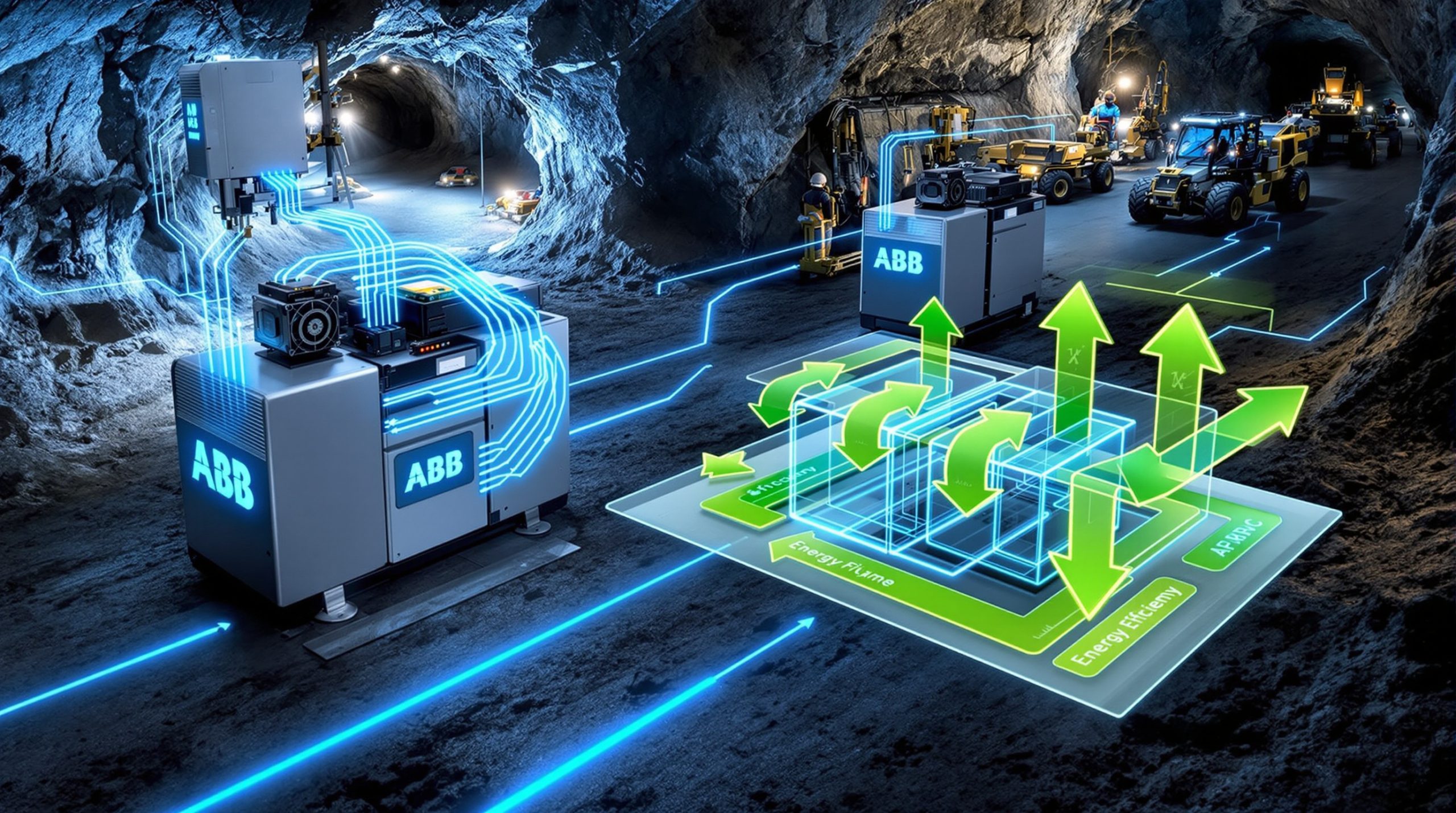Ewoyaa Lithium Project: Ghana's Gateway to Global Clean Energy
The Ewoyaa Lithium Project represents Ghana's pioneering venture into lithium mining, strategically positioned approximately 100km west of Accra in the Central Region. This landmark development aims to establish Ghana as a significant contributor to the global lithium supply chain, supporting the worldwide transition to clean energy technologies and electric vehicle production.
With a substantial mineral resource estimate of 36.8 million tonnes at 1.24% Li₂O, the project is poised to become a cornerstone of Ghana's economic diversification beyond traditional gold mining. As of September 2025, the project is awaiting final parliamentary ratification of its mining lease—the last step in a comprehensive mining permitting process that has already secured environmental approvals, water use permits, and land use certification.
Strategic Location and Infrastructure Advantages
The Ewoyaa project sits within Ghana's mineral-rich Central Region, specifically in the Mfantseman Municipality near Saltpond. This location offers several strategic advantages for efficient resource development and transportation.
The site's proximity to existing transportation infrastructure significantly reduces development costs and simplifies logistics. Being only 100km from Ghana's capital city and main port facilities creates natural efficiencies for export operations without requiring extensive new infrastructure development.
The project further benefits from access to Ghana's established mining workforce, leveraging the country's decades of experience in the resource sector. This human capital advantage reduces training requirements and enables faster operational ramp-up compared to projects in regions without mining traditions.
Ghana's well-established mining regulatory framework provides investors with clarity regarding operational requirements, environmental standards, and fiscal expectations. This regulatory certainty represents a significant advantage over lithium developments in jurisdictions with less defined mining codes.
Geological Formation and Discovery Process
Exploration History
The path to discovering Ewoyaa's lithium resources followed a methodical exploration approach spanning several years. Initial geological surveys identified promising pegmatite formations characteristic of lithium-bearing systems, triggering more focused investigation of the area's potential.
Subsequent systematic exploration programs revealed significant concentrations of lithium-bearing spodumene within these pegmatite structures. The discovery phase progressed through multiple drilling campaigns that progressively confirmed both the extent and commercial viability of the resource.
The project's resource definition expanded through several exploration phases, with each stage refining the geological model and increasing confidence in the deposit's economic potential. This thorough approach to resource verification provides strong foundations for development planning.
Geological Characteristics
The Ewoyaa lithium mineralization occurs primarily within pegmatite bodies—coarse-grained igneous rocks that often host valuable mineral concentrations. These pegmatites are embedded within the ancient Birimian Supergroup geological formation that extends throughout much of West Africa.
Geological analysis has identified multiple deposit zones across the project area, creating opportunities for phased development approaches that can target the highest-grade portions initially. This geological diversity allows for optimized mine planning and resource extraction sequencing.
Spodumene represents the primary lithium-bearing mineral at Ewoyaa, which is significant as spodumene-hosted deposits typically allow for more straightforward battery-grade lithium refining compared to clay-hosted lithium resources. This mineral composition supports more efficient extraction and processing techniques.
Project Metrics and Development Timeline
Resource Estimates and Grade
The project boasts impressive resource metrics that position it as one of Africa's premier lithium developments:
| Parameter | Value |
|---|---|
| Mineral Resource | 36.8 million tonnes |
| Average Grade | 1.24% Li₂O |
| Contained Lithium | Approximately 457,000 tonnes LCE |
| Mine Life | 12 years (initial estimate) |
| Production Target | 3.6 million tonnes of spodumene concentrate |
These figures represent the project's current defined resource, with significant potential for expansion through additional exploration. The grade quality compares favorably with other global hard-rock lithium projects, providing a strong basis for economic returns.
Development Schedule
As of September 2025, the project has achieved several critical regulatory milestones:
- Mining lease application submitted and approved
- Environmental permits secured
- Water use permits obtained
- Land Use Certificate granted
- Mine Operating Permit acquired
The final parliamentary ratification represents the last remaining regulatory hurdle. Upon receiving this approval, the project anticipates:
- Construction commencement shortly after ratification
- 18-24 month construction period
- First production now projected for late 2026/early 2027 (adjusted from previous Q2 2025 estimate)
The company continues to work closely with Ghanaian authorities to secure this final approval while simultaneously advancing detailed engineering and procurement planning to minimize potential delays once ratification is received.
Key Stakeholders and Investment Structure
Ownership Framework
The project operates under a partnership model that balances commercial interests with national development priorities:
- Atlantic Lithium Ltd: 40.5%
- Piedmont Lithium: 40.5%
- Government of Ghana: 13%
- Ghana Minerals Income Investment Fund: 6%
This ownership structure ensures that Ghana maintains significant participation in the project's success while providing international partners with sufficient stake to justify their substantial investments. The model represents a balanced approach to resource development that addresses both commercial and national interests.
Financial Backing
The project has secured substantial financial commitments to support its development pathway:
- Piedmont Lithium committed approximately $128 million in project funding
- Long State has provided binding funding agreements for up to £28 million
- Strategic partnerships include offtake agreements for processed lithium
- Government participation ensures national benefit from resource development
These financial arrangements provide the necessary capital for project construction while creating market channels for the produced lithium. The diversified funding sources increase financial resilience and reduce dependency on any single capital provider.
Mining and Processing Methodology
Extraction Approach
The Ewoyaa project will utilize conventional open-pit mining methodology, representing a well-established approach with predictable costs and operational parameters. This mining style is well-suited to the deposit's near-surface characteristics and enables efficient resource recovery.
Operations will follow standard drill, blast, load and haul processes, employing modern equipment and technologies to maximize efficiency and safety. The mining plan incorporates phased development targeting the highest-grade zones initially to accelerate payback and optimize early cash flows.
Environmental considerations are integrated throughout the mining plan, with progressive rehabilitation activities scheduled concurrent with extraction operations. This approach minimizes the project's environmental footprint and reduces closure liabilities.
Processing Technology
The processing facility will employ dense media separation (DMS) technology, a well-established method for concentrating spodumene from hard-rock lithium deposits. This approach offers several advantages:
- Lower capital intensity compared to more complex processing routes
- Reduced energy requirements versus alternative concentration methods
- Expected lithium recovery exceeding 75%
- Production of high-quality spodumene concentrate suitable for conversion facilities
The plant design also incorporates the recovery of feldspar as a valuable by-product, enhancing overall project economics. This integrated approach to processing multiple minerals from the same resource maximizes value creation from the deposit.
Economic Impact on Ghana
Financial Benefits
The Ewoyaa project represents a significant diversification opportunity for Ghana's mining sector, which has historically been dominated by gold production. This resource diversification helps insulate the national economy from commodity-specific price fluctuations.
Direct economic contributions include:
- Creation of 300-400 construction jobs during the development phase
- Establishment of 200-250 permanent operational positions
- Estimated $15-20 million annual government revenue through taxes and royalties
- Local procurement opportunities for Ghanaian businesses
These benefits extend beyond direct project employment to include supply chain impacts, induced economic activity, and infrastructure improvements that benefit broader community development.
Skills Development
Beyond immediate economic returns, the project offers substantial human capital development opportunities:
- Transfer of specialized mining and processing expertise to Ghanaian workers
- Structured training programs for the local workforce
- Development of technical capabilities in critical minerals sector
- Creation of skills applicable to future lithium and battery material projects
These knowledge transfer activities position Ghana to participate more fully in future critical minerals development opportunities, both domestically and potentially throughout the West African region.
Environmental and Social Responsibility
Environmental Management
The project has secured necessary environmental permits based on comprehensive impact assessments and mitigation strategies. Key environmental management approaches include:
- Water recycling systems drawing from the Ochi-Amissah River
- Progressive rehabilitation of mined areas concurrent with operations
- Biodiversity protection measures for sensitive ecosystems
- Energy efficiency initiatives to reduce the project's carbon footprint
These environmental practices align with international standards and address both immediate impacts and long-term sustainability considerations. Regular monitoring programs will verify compliance with environmental commitments throughout the project lifecycle.
Community Engagement
The developers have implemented a comprehensive stakeholder engagement program to ensure community participation and benefit:
- Regular consultation with local communities and traditional authorities
- Prioritization of local employment where skills are available
- Community development initiatives focused on education and infrastructure
- Transparent communication frameworks for addressing community concerns
These engagement practices recognize that sustainable resource development requires social license and community support. The project team continues to refine its community development approach based on ongoing stakeholder feedback.
Alignment with Ghana's Mining Strategy
National Policy Framework
The Ewoyaa project aligns closely with Ghana's strategic objectives for its mining sector:
- Supporting Ghana's Green Minerals Policy that targets critical battery materials
- Advancing resource sector diversification beyond traditional gold mining
- Promoting responsible mining practices that address environmental concerns
- Enhancing Ghana's position in global critical minerals supply chains
This alignment creates mutually reinforcing incentives for both project developers and government authorities to ensure the venture's success. The project demonstrates how Ghana's policy framework can attract investment in emerging mineral categories.
Regulatory Progress
The project has systematically navigated Ghana's regulatory requirements:
- Mining lease granted pending parliamentary ratification
- Environmental permits secured through comprehensive impact assessment
- Water use permits obtained for processing operations
- Land use certificates approved for project development
These regulatory achievements reflect both the quality of the project's development approach and the functionality of Ghana's mining governance framework. The final parliamentary ratification represents the culmination of this comprehensive permitting process.
Project Challenges and Risk Factors
Market Considerations
While the project's fundamentals remain strong, several market factors present challenges:
- Volatility in global lithium market outlook creates revenue uncertainty
- Competition from established lithium producers in Australia and South America
- Evolving battery technology specifications may affect product requirements
- Securing long-term offtake agreements in a competitive marketplace
Project economics must account for these market realities while maintaining sufficient flexibility to adapt to changing conditions. The developers cite their belief that "the Project's timeline to production aligns well with an anticipated recovery in the market."
Development Hurdles
Practical development challenges include:
- Regulatory approval timelines, particularly parliamentary ratification
- Infrastructure development requirements for reliable operations
- Technical expertise recruitment in competitive global mining labor markets
- Managing community expectations regarding employment and benefits
The project team continues to work through these challenges through proactive planning, government engagement, and transparent community communication. Atlantic Lithium's CEO Keith Muller has noted the company has "continued to make meaningful progress in the advancement of the project" despite facing "challenging delays and a tougher lithium market."
Future Growth Potential
Expansion Opportunities
The project's future extends beyond its initial development plan:
- Exploration upside from additional target areas identified within the license
- Potential mine life extension beyond the initial 12-year estimate
- Opportunities for processing capacity expansion as resources grow
- Possible development of value-added downstream activities within Ghana
These growth pathways could substantially increase the project's long-term economic impact and position Ghana as a significant player in the lithium value chain. Ongoing exploration activities continue to evaluate these expansion possibilities.
Strategic Significance
Beyond its direct economic benefits, the Ewoyaa project carries broader strategic importance:
- Positioning Ghana in the electric vehicle supply chain as automotive manufacturing evolves
- Contributing to global energy transition impact on minerals at a critical growth phase
- Establishing precedent for future critical minerals projects in West Africa
- Creating a template for sustainable resource development that balances economic, environmental and social factors
This strategic significance extends the project's importance beyond its immediate financial returns to include its role in Ghana's long-term economic positioning. Furthermore, recent lithium industry innovations could potentially be applied to enhance the project's efficiency and profitability as development progresses.
Frequently Asked Questions
What makes the Ewoyaa lithium project significant for Ghana?
The Ewoyaa lithium project represents Ghana's first lithium mine and marks an important diversification of the country's mining sector beyond traditional gold production. It positions Ghana as a contributor to the global clean energy transition supply chain while creating new employment opportunities and government revenue streams.
What is the current status of the Ewoyaa project?
As of September 2025, the project has secured most major permits including environmental approvals, water use permits, and the Mine Operating Permit. It is currently awaiting final parliamentary ratification of the mining lease, which represents the last regulatory requirement before construction can begin.
How does the project benefit local communities?
The project is expected to create 300-400 construction jobs and 200-250 permanent operational positions, prioritizing local employment where possible. Additionally, community development initiatives and infrastructure improvements are planned as part of the project's social responsibility framework to ensure broader benefits beyond direct employment.
What environmental safeguards are in place?
The project has secured environmental permits based on comprehensive impact assessments. Plans include water recycling systems, progressive rehabilitation of mined areas, and biodiversity protection measures to minimize ecological impacts. Regular monitoring will verify compliance with environmental commitments throughout the project lifecycle.
Disclaimer: This article contains forward-looking statements regarding project development timelines, production forecasts, and market conditions. Such statements involve known and unknown risks, uncertainties, and other factors that may cause actual results to differ materially from those anticipated. Readers should not place undue reliance on these forward-looking statements, which speak only as of September 2025.
Ready to Capitalise on the Next Major Lithium Discovery?
Discovery Alert's proprietary Discovery IQ model provides instant notifications of significant ASX mineral discoveries, helping investors identify opportunities before the market moves. Explore our dedicated discoveries page to understand how major mineral finds like lithium discoveries can generate exceptional returns for early investors.




